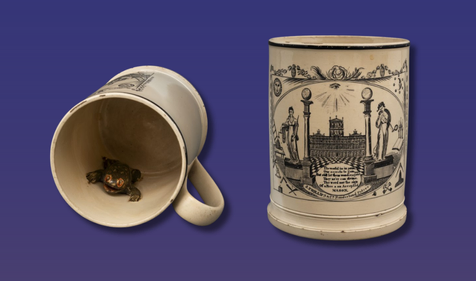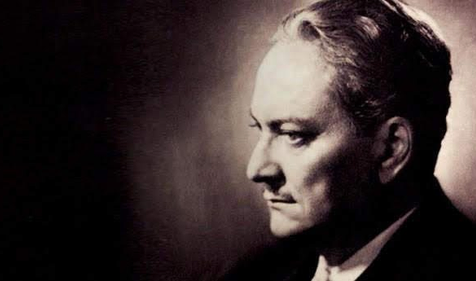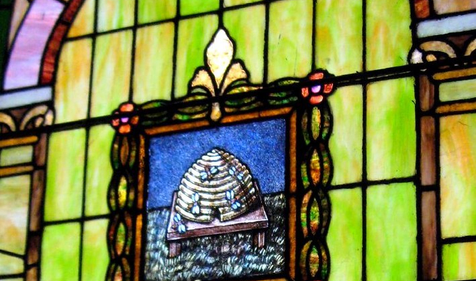Walt Disney was a member of the Masonic youth organization DeMolay International, raising questions about his connection to Freemasonry. Read our blog to discover his true ties to Masonry.
Why are there hidden Masonic symbols in Disney World? Is Club 33 a reference to Scottish Rite Freemasonry? Are these mere coincidences, or is there a greater connection between Walt Disney, his entertainment empire, and Freemasonry?
For those looking to uncover a secret link between the animation giant and our ancient fraternity, we're sorry to disappoint. When you dig into some of these things, along with Walt Disney's personal history as a member of DeMolay International, it's easy to see why folks might assume there is a bigger story waiting to be revealed.
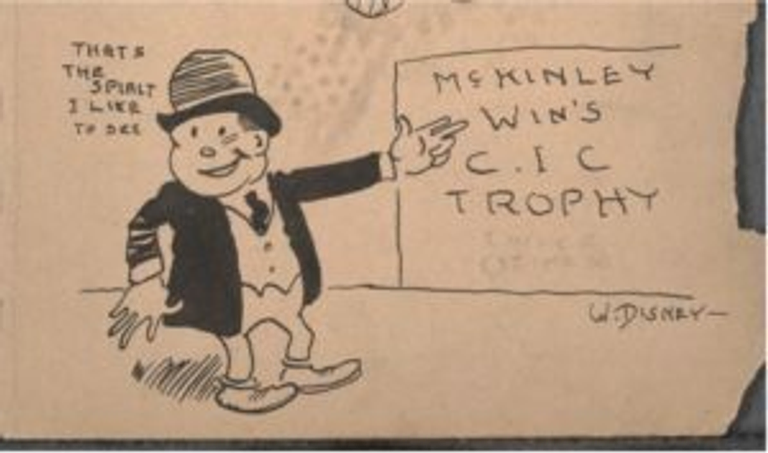
Walt Disney was passionate about drawing from a young age. When he enrolled at McKinley High School in 1917 at age 16, he became the school newspaper cartoonist, creating patriotic drawings in support of the American effort in the first World War. At the same time, he took night courses at the Chicago Academy of Fine Arts. The following year, Walt tried to enlist in the United States Army to fight in Europe, but he was rejected for being too young. Undeterred, Disney forged the date of birth on his birth certificate and joined the Red Cross in September 1918 as an ambulance driver.
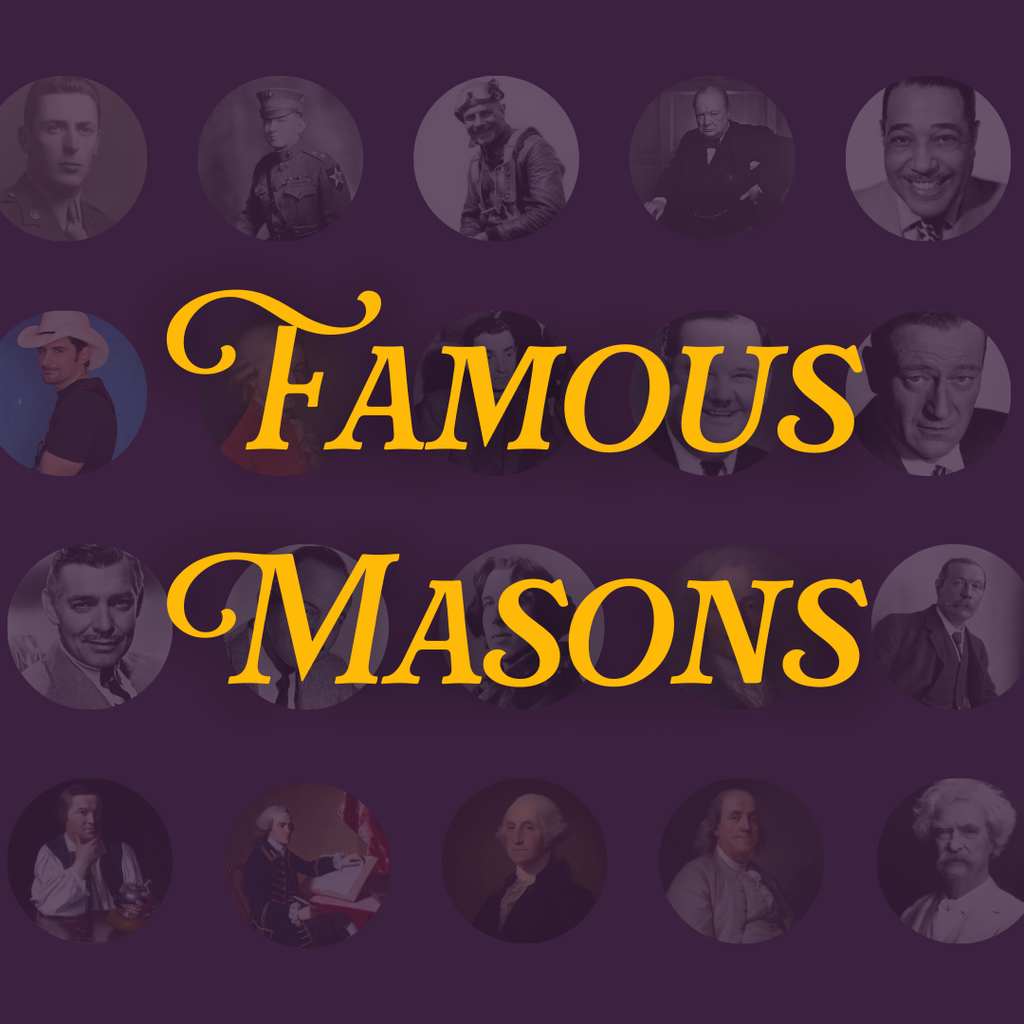
Sign Up for Our Famous Masons Email Series
Learn more about the well-renowned men who we are proud to call "Brother".
Disney the DeMolay
Soon after returning to the states, he worked as an artist at the Pesmen-Rubin Commercial Art Studio, drawing commercial illustrations for advertising, theater programs, and catalogs. The following year, Walt Disney became the 107th member of DeMolay International's Mother Chapter, joining in March 1920 when he was 19.
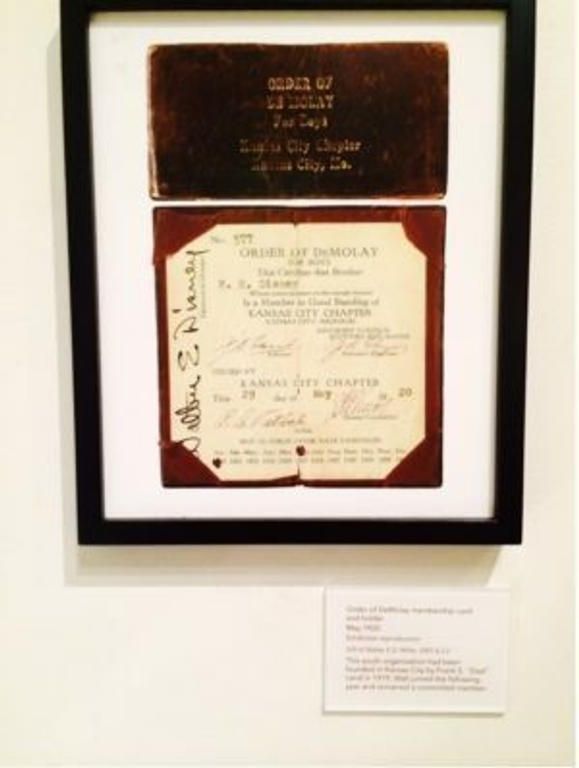
When Disney moved to Hollywood in 1923 to pursue his career as an animator, it proved a daunting endeavor. Although he had created the Mickey and Minnie Mouse cartoons, at this point in time, they were strictly used to fill the time between feature films at cinemas. He made ends meet during this period by spinning off his animated cartoons and selling Mickey Mouse comics to the Sunday paper.
When Walt returned home to visit Kansas City for the first time in 1931, he received the Legion of Honor from DeMolay founder "Dad" Frank S. Land. He said at the time, "I am proud to receive the Legion of Honor, but I feel as though I haven't done anything to merit it."
Breakthrough Success
His feeling of having accomplished little was not to last long. The year after he received the honor, Disney won his first Academy Award for a short, animated feature in 1932 and repeated the win in 1933. Recognizing how important DeMolay International was to his life and growth as a young man, Disney made Mickey Mouse a DeMolay in some of his early cartoons.
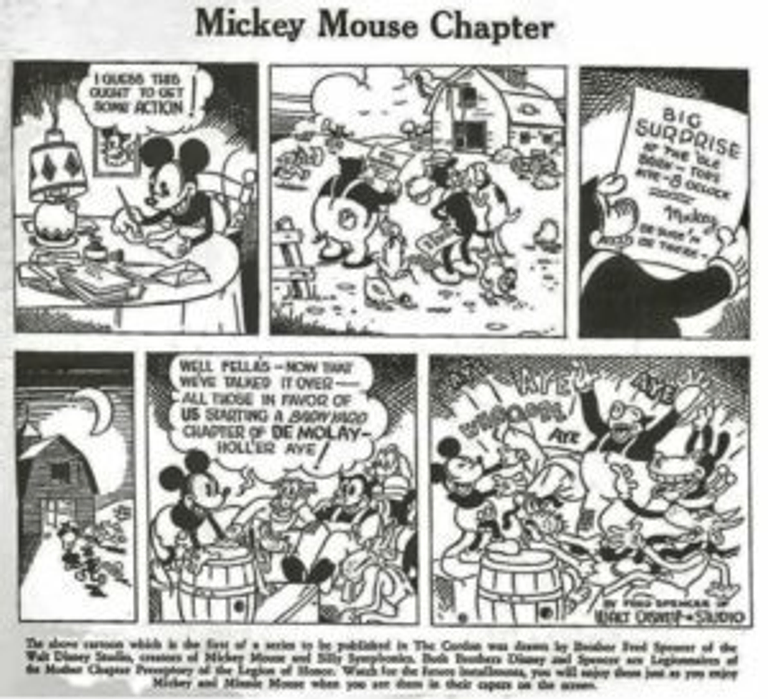
During the early to mid-1930s, five comic strips featuring the now-famous characters of Mickey Mouse, Pluto, Horace, and more were focused on DeMolay. In these early comics, the characters were depicted participating in meetings of the Barnyard Chapter, Order of DeMolay. While they bore Walt Disney's branding signature, one of his many illustrators, Fred Spencer (also a former DeMolay) was credited with creating these strips. These comics were published in The DeMolay Cordon, the organization’s magazine.
In July 1936, during another trip home to Kansas City, Disney took part in conferring the Legion of Honor on 100 candidates at the first DeMolay Founder's Conference. Despite a request from "Dad" Land to address the thousands of boys and advisors in attendance, Disney was afraid of public speaking and declined.

Finding it fascinating that world-famous Disney, the original voice of Mickey Mouse, was intimidated by speaking in front of a live audience, "Dad" Land urged him forward, and Disney overcame his fear, delivering a "rambling but heartfelt presentation." He discussed his career and relayed how influential DeMolay's principles had been in guiding him in life.
Walt "Mason" World?
Despite Walt Disney's tenure and respect for DeMolay International, there is no evidence he ever joined a Masonic lodge and became a Freemason. Speculators can be forgiven for assuming he had continued into the Craft, however. One notable example supporting the connection between Freemasonry and Disney can be found hiding in Disney World's Magic Kingdom.
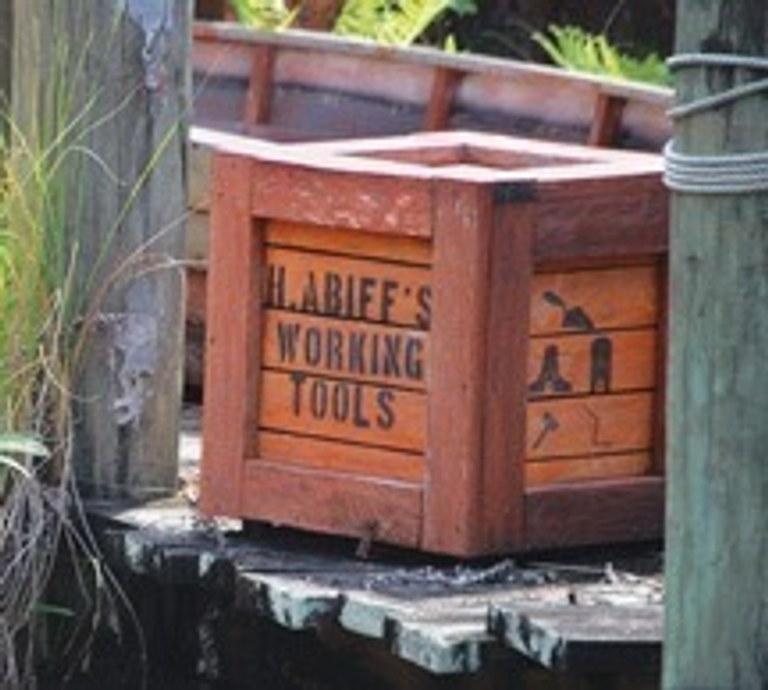
Here you can find a prop crate bearing the inscription "H. Abiff's Working Tools," which, as any Master Mason knows, is clearly a reference to Hiram Abiff, the foundational character of the third degree.
Club 33
Another common myth indicating Disney's association with Freemasonry has to do with the company's Club 33 membership club. The Scottish Rite's 33rd degree is obviously famous, with many of Scottish Rite's most influential members earning this honor. However, the parallels between Club 33 and the 33rd degree are strictly the number and nothing more.
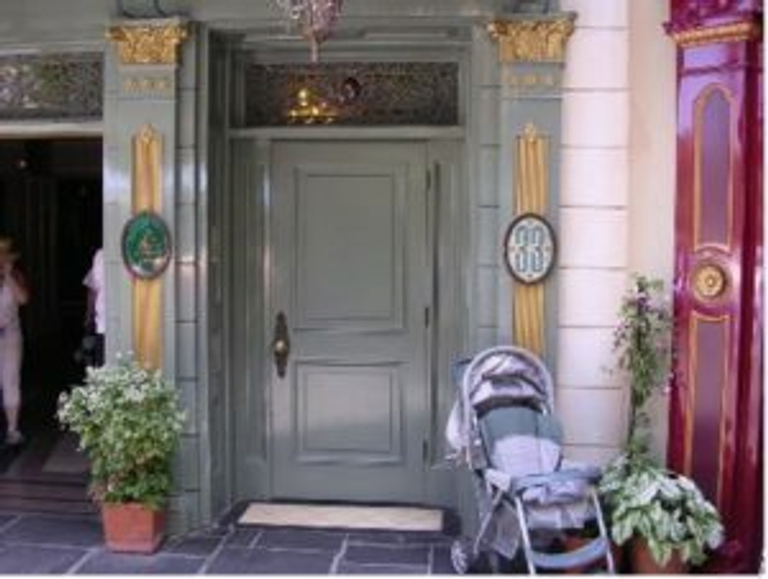
Disney first got the idea for the member club while visiting the attractions at the 1964–1965 New York World's Fair. Walt saw that the corporate sponsors often had "VIP lounges" and thought his theme parks would benefit from a similar concept. Since 1933 was the year the United States repealed the prohibition of alcohol, it is possible that Club 33 was a nod to this era of U.S. history. When the first Club 33 opened in 1967 at Disneyland, it was the only location within Disneyland to sell alcoholic beverages. Today, Club 33 comprises several private dining clubs located within the various Disney Parks, including Tokyo Disneyland and Shanghai Disneyland. There are Club 33 lounges in each of the four theme parks of the Walt Disney Parks & Resorts.
Looking at Walt Disney's tenure as one of the first members of DeMolay International, it is fair that some would assume he went on to become a Freemason. And with the ever-growing mythology around the Disney universe, it is certainly fun to speculate about its connection with our ancient fraternity. In the end, however, Walt Disney was a talented man who, like many, learned important life lessons during his time in DeMolay. The organization's influence on his creative mind and leadership skills can never be in doubt.
Related Stories
Discover additional Scottish Rite blogs and news on this topic.
-
A Jolly Masonic Mug
History
Read More about A Jolly Masonic Mug
-
Manly P. Hall: Philosopher, Mystic, and Freemason
Famous Masons
Read More about Manly P. Hall: Philosopher, Mystic, and Freemason
-
What Does the Beehive Mean in Freemasonry?
Degrees
Read More about What Does the Beehive Mean in Freemasonry?

